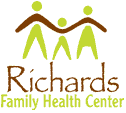Colds and Influenza
West Nile Virus and St John's Wort
West Nile Virus, although new to the US, is well-documented. The Centers for Disease Control identifies it as a flavivirus, a member of the Togavirus family. It is closely related to yellow fever and dengue fever. This is important because the Togavirus family are encapsulated viruses, i.e., they are covered with a lipid (fatty) coating.
This is exciting, because it means the virus is accessible to treatment utilizing high quality St. John's Wort (SJW). Several studies have been done on a variety of encapsulated viruses, including herpes simplex virus types 1 and 2, parainfluenza virus, vaccinia virus, cytomegalovirus and several retroviruses including HIV1, 2, 3, 4, 8, 9, 10. Non-encapsulated viruses or "naked" viruses were also studied for comparison purposes10,13. SJW was a potent anti-viral agent across a variety of encapsulated virus families, but showed no activity against naked viruses.
Unlike a vaccine that is specific to each organism, SJW is active against encapsulated viruses by a variety of mechanisms, including light activation, interference with DNA transcription, impairing the assembly of intact viral particles and the lipophilic (fat-loving) nature of the ring structures (the quinone and phenolic groups)4, 6, 7, 9, 11, 12, 13, 14, 15. These ring structures are critical to the biologic activity of SJW.
From these results, it is reasonable to use high quality, pharmaceutical grade SJW in combating West Nile Virus, since there are no effective pharmaceutical agents. Quality is critical since the level of hypericin and pseudohypericin are key. I can only recommend the SJW product produced by Medi-Herb, which is a pharmaceutical house in Australia, adhering to pharmaceutical manufacturing standards. The product is distributed by Standard Process through alternative health care practitioners, including doctors of chiropractic, acupuncturists and veterinarians. SJW is quite unstable and the active ingredients degrade on store shelves. An independent analysis of 3 products (all of which were certified to contain 0.3% hypericin) were shown to be widely variant, with one product 25% below label claims. It is critically important that the phytochemical integrity of the whole plant be preserved for maximum efficacy.16
Medi-Herb SJW is available at the RFHC and is the only brand we carry.
- Andersen DO, Weber ND, Wood SG et al. Antiviral Res 1991; 16(2): 185-196.
- Lopez-Bazzocchi I, Hudson JB, Towers GHN. Photochem.Photopbiol. 1991; 54(1): 95-98.
- Moraleda G, Wu TT, Jilbert AR et al. Antiviral Res 1993; 20: 235-247.
- Tang J, Colacino JM, Larsen SH et al. Antiviral Res 1990; 13 (6): 313-325.
- Hudson JB, Harris L, Towers GHN. Antiviral Res 1993; 20 (2):173-178.
- Lenard J, Rabson A, Vanderoef R. Proc Natl Acad Sci USA 1993; 90 (1): 158-162.
- Degar S, Prince AM, Pascual D et al. AIDS Res Hum Retroviruses 1992; 8 (11): 1929-1936.
- Carpenter S, Kraus GA. Photochem Photobiol 1991; 53 (2): 169-174.
- Lavie G, Valentine F, Levin B et al. Proc Natl Acad Sci USA 1989; 86 (15): 5963-5967.
- Meruelo D, Lavie G, Lavie D et al. Proc Natl Acad Sci USA 1988; 85 (14): 5230-5234.
- Kraus GA, Pratt D, Tossberg J et al. Biochem Biophys Res Commun 1990; 172 (1): 149-153.
- Takahashi I, Nakanishi S, Kobayashi E et al. Biochem Biophys Res Commun 1989; 165 (3): 1207-1212.
- De Witte P, Agostinis P, Van Lint J et al. Biochem Pharmacol 1993; 46 (11): 1929-1936.
- Panossian AG, Gabrielian E, Manvelian V et al. Phytomed 1996; 3 (1): 19-28.
- Lavie G, Mazur Y, Lavie D et al. Transfusion 1995; 35 (5): 392-400.
- Constantine GH, Karchesy J. Variations in Hypericin concentrations in Hypericum perforatum L. and commercial products. Pharmaceutical Biology 1998; 36 (5): 365-367.
Does this apply to you? If so, see our information on Consultations.
[TOP]
© 2011 Richards Family Health Center. This site or any part may not be reproduced without the written consent of Richards Family Health Center. N Rowan Richards, DC, DABCI, FIACA at 242 South Glendora CA 91741. 626 963 1678. email:richardsfhc@richardsfamilyhealth.com. This site is Not intended to dispense health advice or serve as a substitute for actual patient contact with a qualified healthcare provider. Our sole purpose is one of education. It is our expectation that our site can educate our visitors about the efficacy of some healthcare treatments that exist as an alternative to conventional medical wisdom.
PRIVACY POLICY: Richards Family Health Center takes your privacy very seriously. Be assured that we do not sell or rent your contact information to anyone.


